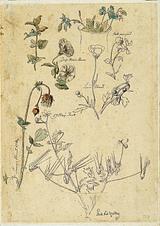Everyday life and realism
From the Golden Age to the Modern Breakthrough

Erik Henningsen: 'Summum jus, summa injuria. The Murder of a Child', 1886.
The visible world. That is what figurative art of the kind found at the Hirschsprung Collection relates to. This holds true regardless of whether it turns its back on reality to explore the recesses of the human mind, or whether it seeks to depict nature and man with the most scrupulous honesty and accuracy. Nineteenth-century Danish art approaches reality in different ways, but many artists favoured what we call Realism, where you try to say something true about the world.
Down to the tiniest detail
During the first half of the century, Eckersberg and the students at the art academy would closely scrutinise even the smallest tufts of grass in order to represent every detail of the landscape as accurately as possible. In that way it might be possible to fulfil their stated ambition to depict the world truthfully. They studied the human body in great detail, using both male and female models in order to be able to evoke the figures in their paintings as people of flesh and blood. However, they had little interest in the darker sides of life. So it is something of a qualified truth when the art of the Danish Golden Age is described as everyday scenes: we only get access to certain parts of everyday life.
Down to the tiniest detail
During the first half of the century, Eckersberg and the students at the art academy would closely scrutinise even the smallest tufts of grass in order to represent every detail of the landscape as accurately as possible. In that way it might be possible to fulfil their stated ambition to depict the world truthfully. They studied the human body in great detail, using both male and female models in order to be able to evoke the figures in their paintings as people of flesh and blood. However, they had little interest in the darker sides of life. So it is something of a qualified truth when the art of the Danish Golden Age is described as everyday scenes: we only get access to certain parts of everyday life.

J. Th. Lundbye did more than draw in this sketchbook from 1840; he also wrote down notes on specific details so that he would remember everything back home in the studio.
Art and society
During the second half of the nineteenth century, art took on growing importance as a vehicle for political messages and for speaking the truth. The literary scholar Georg Brandes emphasised this fact when he gave a famous lecture stating that art should address social issues. And many artists did. The structures of society were in need of reinvention, greater equality was called for, and Erik Henningsen and other social realist painters entered the discussions with their art.

Erik Henningsen’s tragic 'Summum jus, summa injuria. The Murder of a Child' from 1886 is an example of social realist art. A young woman has killed her new-born child in order to avoid the poverty and ostracization she would face as an unmarried mother.
Other artists focused less relentlessly on politics, depicting the sunnier sides of life as well as the harsh realities of everyday life. Among this group, we find P.S. Krøyer and Michael and Anna Ancher as key portrayers of common people and working lives in the city and the country. This new direction within the arts, which is also evident in literature, is known as the Modern Breakthrough.

Displaying a keen sense for realism, Krøyer focuses on the brightly reflected light, the water and the vibrant energy of the boys in this 1892 open-air study from Skagen.